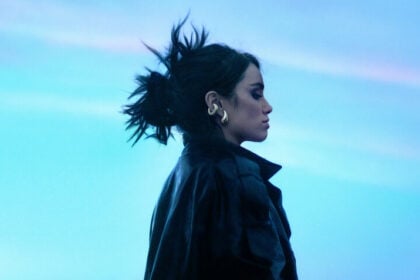The third season of the reality dating competition Perfect Match has premiered, introducing a structural innovation that redefines the landscape of unscripted television. Produced by Kinetic Content, the series moves beyond its established formula of assembling talent from within Netflix’s own ecosystem. For the first time, the villa’s doors are open to contestants from rival networks and flagship franchises, transforming the show from an internal promotional vehicle into a pan-network, all-star arena. This strategic decision elevates the competition beyond a simple search for romance, positioning it as a meta-franchise that aggregates audiences and pits the distinct methodologies of various reality show formats against one another in a single, high-stakes environment.
The Roster: A Curated Collision of Reality Television Archetypes
The cast of 22 reality television veterans is a meticulously engineered collection of established personas, pre-existing narratives, and distinct gameplay styles, creating a microcosm of the entire unscripted genre. The ensemble is bisected into two strategic groups: high-profile figures from external networks and seasoned incumbents from the Netflix Reality Universe.
The contingent from outside Netflix includes notable alumni from some of the most successful dating franchises on television. From the ABC ecosystem, The Bachelor season 26 lead Clayton Echard and his former contestant Rachel Recchia are reunited, bringing a well-documented and controversial history into the competition. From MTV’s long-running Siesta Key, original star Juliette Porter makes her Netflix debut. The cast is further bolstered by a significant presence from the Love Island franchise, which has aired on both CBS and Peacock, featuring two-time winner Justine Joy, Carrington Rodriguez, Ray Gantt, and Scott Van-Der-Sluis, a veteran of three different international versions of the show.
Complementing these external figures is a robust lineup of Netflix’s own personalities, selected from a diverse portfolio of unscripted formats. This group can be analyzed by the nature of their original shows. From the “social experiment” category come Amber Desiree “AD” Smith, Ollie Sutherland, Freddie Powell, and Madison Errichiello of the Love Is Blind franchise, alongside J.R. Warren and Sandy Gallagher from The Ultimatum. Contestants from more gamified, strategic shows include Quori-Tyler “QT” Bullock of The Circle and Battle Camp, and Hannah Burns from The Mole. Finally, the cohort from programs centered on attraction and temptation includes Louis Russell, Jalen Brown, and Lucy Syed from Too Hot to Handle; Alex Zamora, Cody Wright, and Olivia Rae from Temptation Island; and Daniel Perfetto from Dated & Related. This curation is not random; it is a form of narrative engineering designed to provoke specific interactions. By assembling “winners,” “villains,” strategists, and romantics, the production ensures a clash of reality TV playstyles, making the show an examination of which methodology proves most effective within this new, integrated ecosystem.

Embedded Narratives: Pre-Existing Histories as Narrative Architecture
The season’s narrative structure is fortified with guaranteed conflict and emotional stakes through the deliberate casting of pairs with significant, publicly documented histories. This production strategy serves as a form of narrative risk management, ensuring compelling storylines are active from the first episode rather than relying on the unpredictable development of new relationships.
The most prominent of these embedded narratives is the reunion of Clayton Echard and Rachel Recchia. Their previous dynamic on The Bachelor concluded with a controversial and emotionally charged breakup, a storyline that generated substantial public discussion. Their presence in the same villa provides an immediate and high-stakes relational arc that transcends the show’s immediate context. Similarly, the inclusion of J.R. Warren and Sandy Gallagher from The Ultimatum: Marry or Move On introduces a narrative of unresolved chemistry. As trial marriage partners on their original season, they displayed a strong connection that was a central point of drama, making their reunion a direct continuation of an established “what if” scenario. This technique, which leverages audience familiarity with past events, mirrors the inter-textual storytelling of scripted spin-offs and comic book crossovers, signaling a maturation of the reality TV crossover format into a more cohesive, serialized universe.
The Ludic Framework: Gameplay Mechanics and Narrative Contrivance
The series is hosted by Nick Lachey and produced by Kinetic Content, the creative force behind other high-concept Netflix dating shows like Love Is Blind and The Ultimatum. The show’s format adheres to the Kinetic philosophy of imposing artificial, game-like structures onto the process of forming relationships. The core gameplay loop involves contestants pairing up and competing in compatibility challenges. The winning couple earns the power to act as matchmakers, a position of significant strategic influence. They can disrupt existing couples by sending participants on dates with new singles brought into the villa. This mechanic intentionally conflates romantic connection with strategic acumen, as the most powerful couple is not necessarily the most in love, but the one most adept at navigating the game.
This structure, however, exposes a central tension within the genre. The format prioritizes the generation of drama over the cultivation of genuine, lasting connections, a critique often leveled at the franchise, which has a poor track record of producing successful long-term couples. The presence of seasoned reality personalities, who are adept at performing for the camera and prioritizing strategic gameplay for screen time, further complicates the premise of finding a “perfect match.” The result is a “gamedoc” format where the stated goal of romance often feels secondary to the unstated goal of creating compelling, if contrived, television.
The Grammar of Unscripted Cinema: Production and Post-Production
The series employs a sophisticated visual and auditory language to construct its narratives. Filming took place in a luxurious, isolated villa in Mexico, a location consistent with the tropical aesthetic of previous seasons. This setting functions as a narrative device, a controlled “biosphere” designed to intensify emotional dynamics by removing contestants from their everyday lives. The production design features an infinity pool, expansive lounge areas, and state-of-the-art facilities, all under the surveillance of strategically placed cameras, reinforcing a sense of constant observation.
The cinematography aims for a filmic aesthetic, reportedly utilizing high-end digital cameras like the Sony Venice 2 and specific lens packages to achieve a polished, cinematic look that elevates it above standard reality programming. The visual style often plays with light, shadow, and reflections to create a sense of voyeurism and underlying tension. However, the bulk of the narrative “writing” occurs in post-production. Editors deploy a range of techniques to shape audience perception, using ominous music, dramatic pauses, and carefully selected reaction shots—often taken out of context—to construct heroes, villains, and specific storylines from thousands of hours of footage. This editorial process is a masterclass in creating drama, transforming mundane interactions into moments of high tension and ensuring the final product aligns with the producers’ desired narrative arcs.
The Post-Production Paradox: Narrative Control in the Age of Spoilers
A significant challenge to the show’s narrative construction is the substantial delay between its production and broadcast. Filmed in the summer of 2024, the season airs more than a year later, in August 2025. This long post-production timeline, necessary for editors to craft storylines from extensive footage, has become increasingly vulnerable in an era of social media and celebrity-adjacent cast members.
This vulnerability is exemplified by the season’s most significant real-world development: the relationship between AD Smith and Ollie Sutherland. Months before the premiere, the couple’s engagement and subsequent pregnancy announcement became public knowledge. This spoiler was officially confirmed by Netflix itself during a reunion special for another of its reality shows, where the proposal, filmed for Perfect Match, was aired as a promotional clip. This represents an adaptive strategy by the network, shifting the audience’s focus from the suspense of “what will happen?” to the intrigue of “how did it happen?” This pivot is underscored by reports that post-production involved additional editing to shape the on-screen depiction of their relationship journey, suggesting the process was more tumultuous than the eventual outcome. This situation highlights a fundamental tension in modern reality TV production: the traditional, lengthy post-production cycle is at odds with the real-time lives of its cast. This may necessitate a future re-evaluation of production timelines to mitigate the risk of real-world events overtaking the manufactured narrative.
Conclusion: A Bellwether for the Future of Reality Television
Perfect Match Season 3 stands as a landmark moment in the evolution of unscripted programming. Its primary innovation—the creation of a pan-network, all-star competition—positions it as a potential new center of gravity in the reality dating genre. The success of this season will be measured not by the longevity of the couples it produces, a metric where the franchise has historically underperformed, but by its execution of this ambitious crossover concept. By bringing disparate franchises and their dedicated audiences under a single banner, the series serves as a bellwether for the future of reality television, testing the viability of a truly integrated, multi-network universe that prioritizes strategic performance and manufactured drama over the increasingly quaint notion of authentic connection.
The 10-episode season premieres with a release of the first six episodes. A second batch containing episodes 7 through 9 will be released one week later, with the single-episode finale arriving in the third week. The episodes become available for streaming on August 1, August 8, and August 15, 2025, respectively.























